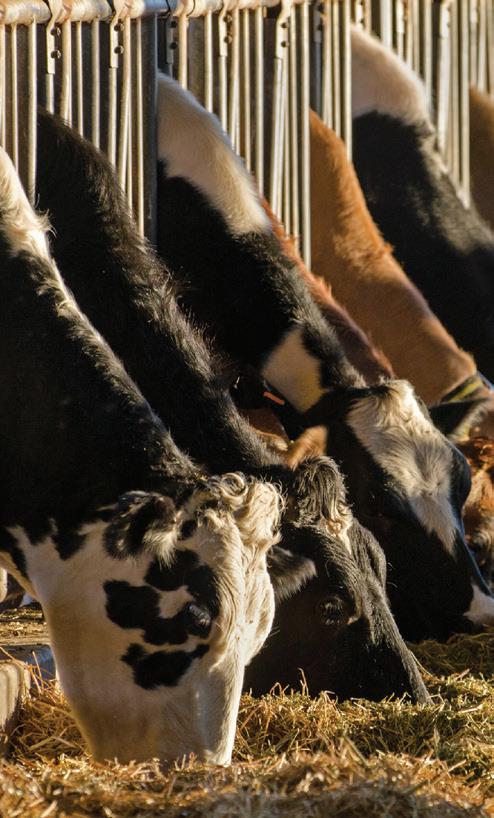
2 minute read
(costly) mistakes 40 years in the A.I. industry
By Julie Ainsworth, Retired CentralStar Records Analysis Consultant
Having data is key to finding where profit opportunities exist.
You can’t troubleshoot a problem or area of opportunity without having data to do it. Remember, anecdotal data and observations are notoriously inaccurate! SCC, energy corrected milk, and genetic data for individual animals is key information often missing from a dairy’s records.
Monthly DHI testing provides data that paints a picture of areas of opportunity and lost profit. At a cost of pennies per cow, routine DHI testing easily pays for itself and adds profit to the bottom line through improved management in many areas.
Overcrowding always has a cost.
Some herds manage overcrowding better than others; but, even in the most well managed herds, it catches up eventually. Cow comfort, bunk and feeding management, lameness, and grouping strategies all play a part, here. Experience shows it’s often an uncontrollable event, such as heat stress, that “knocks the herd for a loop” and limits production performance or increases culling.
Every facility has a limit to the amount of milk that can be produced in it. Crowding more cows in does not mean more milk is harvested. With good DHI data, you can make more informed decisions. Monitoring production and SCC trends helps to identify if adding more cows is generating more high-quality milk, or if it is having the opposite effect. DHI data can also be used to cull unprofitable cows, reducing the expense to manage them (vaccinations, treatment, etc.), while improving comfort and performance of the rest of the herd.
Transition cows are the cows from whom all blessings flow.
Taking good care of these cows results in maximum production, good reproductive efficiency, and low-disease rates. It is especially important to avoid overcrowding bunk space with this group.
Herds that have the best performance have 30 inches of bunk space per cow, four inches of water space per cow, comfortable stalls, good cow cooling, and a well-balanced ration free of molds and mycotoxins. Herds that are large enough also benefit from separating first-lactation heifers from older cows. CentralStar consultants can help in this area.
Genetics are an investment in your future.
Your breeding decisions, today, influence the type of cows you milk in the future. What kind of herd will be most profitable for you in the future?
Work with the CentralStar team to determine genetic strategies that meet your milk market and operation goals. Genetic consulting plans using StrataGEN® or the Select Mating Service® save time, manage inbreeding, accelerate genetic progress, and develop animals that meet your goals. Also, never overlook the most elite genetics available, such as those in NxGEN®, simply because of cost. Investment in genetics routinely and reliably has one of the greatest ROI’s of any you can make on your dairy.
These lessons might seem obvious; however, they routinely show up as opportunities on dairies. If you’re unsure where you stand with any of these areas, or recognize you need help, ask your CentralStar team. CentralStar’s consultant team is well-trained, passionate, and eager to help you.




Now that I am enjoying retirement, I want to say thank you to the producers who allowed me the opportunity to help your dairy in some small way. It has been my great pleasure to work in this industry with wonderful, caring people.
Best wishes! - Julie
Do you have data for effective decisions?
What’s your stocking density?
How are your fresh cows coming through transition?
What does genetic selection say about your future?







